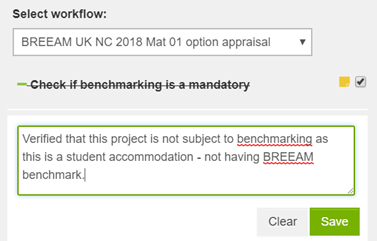Release notes March 2019
Highlights
New
Building Circularity tool launched
New circular design tool is now available. It allows
tracking, quantifying and optimizing the circularity of materials sourced and
used during the building life-cycle, as well as the circularity at the end of
life. It allows getting a holistic picture, as well as detailed breakdown per
material type. It also supports applying Design for Disassembly and Design for
Adaptability principles. This tool can be used for HQE Economie Circulaire, London Plan Circularity Statement, Ellen MacArthur Foundation Circularity Indicators as well as other circular design purposes.
General productivity
features
Scope of calculation is specified per design
and this is reflected also in materials query
Visual improvements in material input form
Resource additional parameters include now hover-over helps
explaining their function.
Resource additional parameter input fields have been made clearer
and more compact.
The result build-up pie charts now contain the percentages
of total for each contributing part.
Workflows now allow taking notes
This will allow you to easily document your compliance and
decisions during the project in one place.

Other generic productivity updates
- Software data input pages load significantly faster
- All units that can be inputted as kg, can also now be inputted as tons
- More units of measure available for many materials.
- Users can disable the chat function from their profile.
- There is a warning when several materials could be replaced using the “Replace” feature.
- Any materials added to building materials query are automatically pre-classified according to RICS, French “Lot” system, Norwegian NS3541, and Finnish Talo2000 systems.
- Hovering over the name of a design will show additional information about the designmperial unit options are available in the TRACI LCA tools in materials filter by unit
- Carbon Designer is available via the materials query from button Import data.
- Carbon Designer has new materials, including generics and Norwegian lavkarbonbetong.
- Warning under material info popups (green question mark) if data is expired
- Excel exports now export data using number formatting of your locale
Business level features
Carbon Heroes Benchmark visualisations have been redrawn for clarity and format
LCA Checker and scope
checks are combined to a Completeness and plausibility checker
To make finding any potential issues with the calculations,
the automated mandatory scope checking (e.g. for completeness against BREEAM
requirements) and the plausibility checks relating to the LCA inputs and
results are combined to a single Scope and plausibility checker. To make using
this information more useful, this is available both in materials query and
results page (Business license). This contains pre-configured checks for all different BREEAM
schemes for example.
BIM integration and import
related features
User can convert all imported data to their own units (imperial
or metric) when importing
Users can remove their own mappings directly, or report auto detected mappings from previous work from other users if they think they are not correct in the import mapper ambiguity resolver. This is only
possible for pre-existing mappings.
Users can view the mapping explanation for any imported datasets
under “BIM traceability” feature.
Users can lock rows of data to prevent them being
overwritten in import. Lock will also prevent editing. This is particularly
useful if you have for example added data that is not coming from BIM.
Importing to a design that has data will also give a warning
about overwriting the data
Expert level features
Expert plan users get now at no additional charge the following features “Carbon data/3D for BIM” and “Local compensation row by row adjustment”. These features are not available otherwise. Local compensation allows changing the sourcing location for a specific material. It will show as “Not needed” for all materials that are already representing the local region. “Carbon data/3D for BIM” allows completing LCA and getting the results directly in BIM tools supporting the feature (currently Revit).Upcoming Carbon Designer changes - before end of March
Improvements and updates for Energie Carbone (France)
Over 300 installations datasets and 700+ other datasets
Related Articles
Release notes March 2020
Release note highlights Summary of release highlights - all users This release delivers 10 customer requested features Significant improvements to visual comparisons on the project main page Favorite materials can be stored in organisation profile ...Release notes June 2020
Release notes highlights Check out the release notes below. If you want to read more details about the June update, download the PDF file from the attachment. The One Click LCA Pre-Verified EPD Generator is now available and allows you to deliver ...Release notes December 2019
Release note highlights Summary of release highlights - all versions Error corrections in materials thickness handling and Carbon Designer facades New detailed comparison graph is added to the end of project main page New results sidebar allows a ...Release notes May 2020
Release notes highlights Check the highlights of this release below, and view the downloadable PDF file for a full overview of the May release in the attachment. We introduce the Request for EPD feature to allow getting more data directly from ...Release notes April 2019
One Click LCA April 2019 release notes (minor release) This release is predominantly focused on Carbon Designer improvements. These improve functionality and prepare upcoming releases of regional baselines for United States, Canada and Finland and ...